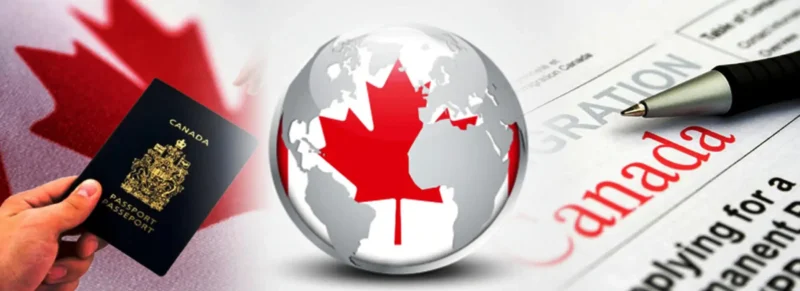Canada’s immigration system is undergoing significant changes, with Provincial Nominee Programs (PNPs) now taking center stage as the main route for skilled workers to gain permanent residence. Between 2025 and 2028, these provincial programs are expected to become the leading pathway for hundreds of thousands of newcomers, redefining how immigrants establish their lives and careers in Canada.
Understanding Provincial Nominee Programs
Provincial Nominee Programs represent Canada’s commitment to distributed economic growth and regional development. Unlike federal immigration programs that operate under uniform national criteria, Provincial Nominee Programs empower individual provinces and territories to select immigrants who meet their specific labor market needs and economic priorities.
Each province operates its own PNP with unique streams, eligibility requirements, and selection criteria tailored to local workforce gaps. This decentralized approach ensures that immigration supports regional economic development while giving candidates multiple pathways to Canadian permanent residence.
The provinces and territories with active PNPs include British Columbia, Alberta, Saskatchewan, Manitoba, Ontario, Quebec (through its own distinct system), New Brunswick, Nova Scotia, Prince Edward Island, Newfoundland and Labrador, Yukon, and the Northwest Territories.
The Explosive Growth of Provincial Nominee Programs
The trajectory of Provincial Nominee Programs tells a compelling story of strategic immigration planning. By 2028, PNPs are projected to welcome nearly 130,000 newcomers annually—a remarkable increase from approximately 105,000 in 2025. This 24% growth over just three years underscores the federal government’s confidence in provincial immigration selection.
This expansion reflects several key factors driving Canada’s immigration strategy. First, provinces have demonstrated exceptional ability to identify and attract candidates who successfully integrate into local economies, a testament to the effectiveness of the PNP system. Second, regional labor shortages require targeted solutions that federal programs alone cannot address. Third, PNPs create stronger connections between immigrants and communities from the outset, improving retention rates.
The growth trajectory positions Provincial Nominee Programs as the most significant component of Canada’s economic immigration system, surpassing even Express Entry in terms of annual admissions. This shift creates unprecedented opportunities for prospective immigrants, particularly for those whose profiles may not rank highly in federal programs, thereby enhancing Canada’s attractiveness as an immigration destination.
Why Provincial Nominee Programs Are Becoming Powerhouses
Several factors contribute to the rising dominance of Provincial Nominee Programs in Canada’s immigration ecosystem:
Targeted Labor Market Solutions
Provinces possess intimate knowledge of their local economies, industries, and workforce needs. This granular understanding allows them to design immigration streams that precisely target skills shortages. A province experiencing healthcare worker shortages can prioritize nurses and physicians, while another facing construction labor gaps can focus on skilled tradespeople.
Lower Barriers to Entry
Many PNP streams have more accessible eligibility criteria than federal programs. Candidates who fall short of Express Entry’s Comprehensive Ranking System (CRS) thresholds often find viable pathways through provincial nomination. Some streams don’t require job offers, while others accept lower language proficiency levels for specific occupations.
Express Entry Advantages
Provincial nomination through Express Entry-aligned streams provides an automatic 600 CRS points—virtually guaranteeing an Invitation to Apply (ITA) in subsequent federal draws. This powerful boost transforms candidates’ prospects, making provincial nomination the most effective way to secure permanent residence quickly.
Diverse Pathways
Provincial Nominee Programs offer a wide range of immigration streams. Options include pathways for international students, skilled workers with job offers, entrepreneurs, semi-skilled workers in high-demand sectors, and even some streams that don’t require Canadian work experience. This diversity ensures that candidates with various backgrounds and qualifications can find suitable pathways.
Provincial Nominee Programs: Key Provincial Programs to Watch
As Provincial Nominee Programs expand, certain provinces are emerging as particularly significant players in Canada’s immigration landscape:
1. Alberta Advantage Immigration Program
Alberta continues focusing strategically on healthcare and construction—two sectors critical to the province’s economic growth and infrastructure development. The Alberta Advantage Immigration Program (AAIP) has refined its streams to attract nurses, physicians, allied health professionals, and skilled construction workers.
Recent enhancements to AAIP include expedited processing for in-demand occupations and dedicated pathways for international graduates from Alberta institutions. The province’s strong economy, the absence of a provincial sales tax, and its affordable cost of living make it increasingly attractive to skilled immigrants.
Alberta’s nomination allocation is growing substantially, reflecting both its economic expansion and persistent labor shortages. Healthcare facilities across Calgary, Edmonton, and rural communities urgently need qualified professionals, while major infrastructure projects require thousands of skilled tradespeople.
2. Ontario Immigrant Nominee Program
As Canada’s most populous province and economic engine, Ontario wields significant influence through the Ontario Immigrant Nominee Program (OINP). The province prioritizes tech workers and skilled trades—two sectors fundamental to Ontario’s economic competitiveness.
Ontario’s tech sector, concentrated in the Toronto-Waterloo corridor, competes globally for software developers, data scientists, cybersecurity specialists, and IT professionals. OINP’s Tech Draw stream specifically targets these occupations and conducts regular draws for Express Entry candidates in technology roles.
Simultaneously, Ontario faces substantial shortages of skilled tradespeople in the construction, manufacturing, and industrial sectors. OINP streams targeting electricians, welders, machinists, and other tradespeople help address these gaps. The province’s diverse economy and numerous pathways make OINP one of the most versatile Provincial Nominee Programs available.
3. Atlantic Immigration Program
The Atlantic provinces—New Brunswick, Nova Scotia, Prince Edward Island, and Newfoundland and Labrador—have pioneered innovative approaches to immigrant retention. Through coordinated efforts and the Atlantic Immigration Program, these provinces successfully attract and retain international graduates and healthcare professionals.
These provinces excel at retaining international students who complete credentials at local institutions. Dedicated graduate streams offer streamlined pathways to permanent residence, encouraging graduates to build careers locally. Healthcare streams address persistent shortages of doctors, nurses, and allied health professionals in both urban and rural communities.
The Atlantic provinces’ smaller populations and close-knit communities create welcoming environments where newcomers quickly integrate and establish roots. Success rates demonstrate that targeted provincial immigration combined with comprehensive settlement support produces excellent retention outcomes.
How Provincial Nominee Programs Work: The Application Process
Step 1: Research Provincial Programs
Each province operates multiple streams with distinct eligibility criteria. Candidates must research programs thoroughly to identify streams matching their qualifications, work experience, and immigration goals. Provincial websites provide detailed information about stream requirements, processing times, and application procedures.
Step 2: Meet Eligibility Requirements
Requirements vary significantly across provinces and streams but commonly include factors such as work experience in eligible occupations, language proficiency (typically CLB 4 to 7, depending on the stream), educational credentials, and, in some streams, job offers from provincial employers.
Some streams require Expression of Interest submissions, in which candidates are ranked and selected, while others accept applications on a first-come, first-served basis until allocations are filled.
Step 3: Submit Provincial Application
Candidates submit applications directly to provincial immigration offices, along with supporting documentation proving they meet the stream requirements. Provincial processing times range from a few weeks to several months, depending on the stream and application volume.
Step 4: Receive Provincial Nomination
Successful applicants receive provincial nomination certificates. For Express Entry-aligned streams, nomination adds 600 CRS points to the candidate’s profile. For base PNP streams, nomination allows candidates to apply directly to IRCC for permanent residence.
Step 5: Apply for Permanent Residence
After receiving a nomination, candidates submit federal permanent residence applications to Immigration, Refugees and Citizenship Canada. Express Entry nominations result in ITAs in subsequent draws, while base nominations require paper-based applications.
You can explore detailed information about all provincial programs at the official IRCC Provincial Nominee Programs page.
Provincial Nominee Programs: Strategic Advantages for Candidates
Provincial Nominee Programs offer compelling advantages that make them increasingly attractive compared to federal pathways:
More Realistic for Mid-Range Candidates
Express Entry’s high CRS cutoffs exclude many qualified skilled workers. PNPs provide viable alternatives for candidates with CRS scores in the 350-450 range who possess in-demand skills but lack factors that maximize CRS points.
Regional Opportunities
Candidates willing to settle outside major metropolitan areas find excellent opportunities through PNPs. Smaller cities and rural communities offer lower costs of living, tight-knit support networks, and a genuine community welcome—alongside clear pathways to permanent residence.
Occupation-Specific Pathways
Many streams target specific occupations experiencing acute shortages. Candidates in these occupations benefit from dedicated pathways with regular selections and favorable processing times.
Family Settlement Support
Provincial governments typically provide enhanced settlement services to help nominees and their families integrate successfully. These services include language training, employment assistance, credential recognition support, and community orientation programs.
Maximizing Your Provincial Nominee Programs Success
To optimize your chances with Provincial Nominee Programs, consider these strategic approaches:
Target Multiple Provinces
Don’t limit yourself to one province—research multiple PNPs to identify several viable pathways. Different provinces conduct selections at different frequencies, so maintaining eligibility for various programs increases your chances of nomination.
Improve Your Profile
While PNP eligibility requirements may be lower than Express Entry, stronger profiles receive priority in competitive streams. Invest in improving language scores, obtaining Educational Credential Assessments, and gaining additional Canadian work experience when possible.
Consider Job Offers
Many PNP streams prioritize or require job offers from provincial employers. Networking, applying for positions, and obtaining offers significantly strengthen applications. Some employers actively participate in PNP recruitment and understand the nomination process.
Understand Provincial Priorities
Please stay tuned for provincial labor market trends and program updates. Provinces regularly adjust streams, occupation lists, and selection criteria in response to evolving economic needs. Aligning your application timing with provincial priorities improves success rates.
Be Geographically Flexible
Willingness to settle in smaller communities or less popular regions creates advantages. Some provinces offer dedicated streams for rural and northern communities with expedited processing and enhanced support.
The Future of Provincial Nominee Programs
As Provincial Nominee Programs grow toward 130,000 annual nominations by 2028, their role in shaping Canada’s immigrant population will become increasingly central. This expansion reflects confidence in provincial selection and recognition that regional immigration drives balanced national growth.
Future developments likely include further stream specialization, enhanced technology for application management, stronger employer engagement, and improved coordination between provincial and federal systems. The programs will continue evolving to address emerging labor market needs, from technology and healthcare to skilled trades and agriculture.
Conclusion
Provincial Nominee Programs have transformed from supplementary immigration pathways to the driving force behind Canada’s economic immigration system. With nearly 130,000 annual nominations projected by 2028, PNPs represent the most reliable route to Canadian permanent residence for skilled immigrants who may not achieve top Express Entry rankings.
Whether through Alberta’s focus on healthcare and construction, Ontario’s prioritization of tech and trades, or Atlantic Canada’s success in retaining graduates and healthcare professionals, Provincial Nominee Programs offer diverse, accessible pathways aligned with regional needs.
For prospective immigrants, the message is clear: Provincial Nominee Programs deserve primary consideration in your Canadian immigration strategy. By researching provincial options, strengthening your qualifications, and aligning with regional priorities, you can leverage these growing powerhouses to achieve your permanent residence goals.







1 comment
Your blog is a breath of fresh air in the often stagnant world of online content. Your thoughtful analysis and insightful commentary never fail to leave a lasting impression. Thank you for sharing your wisdom with us.